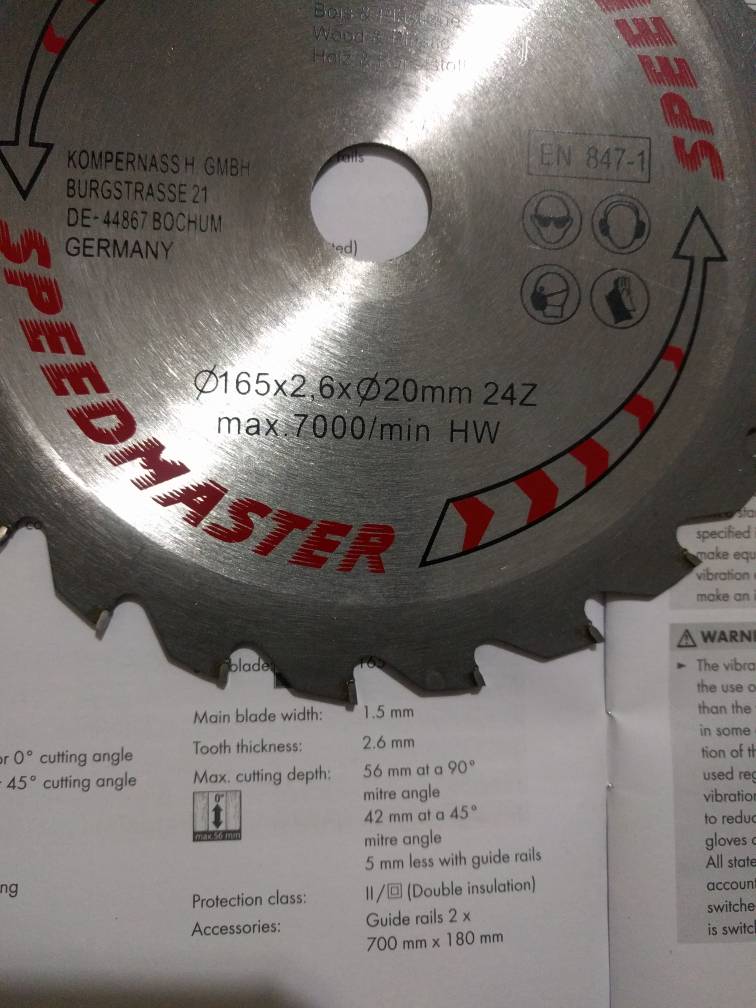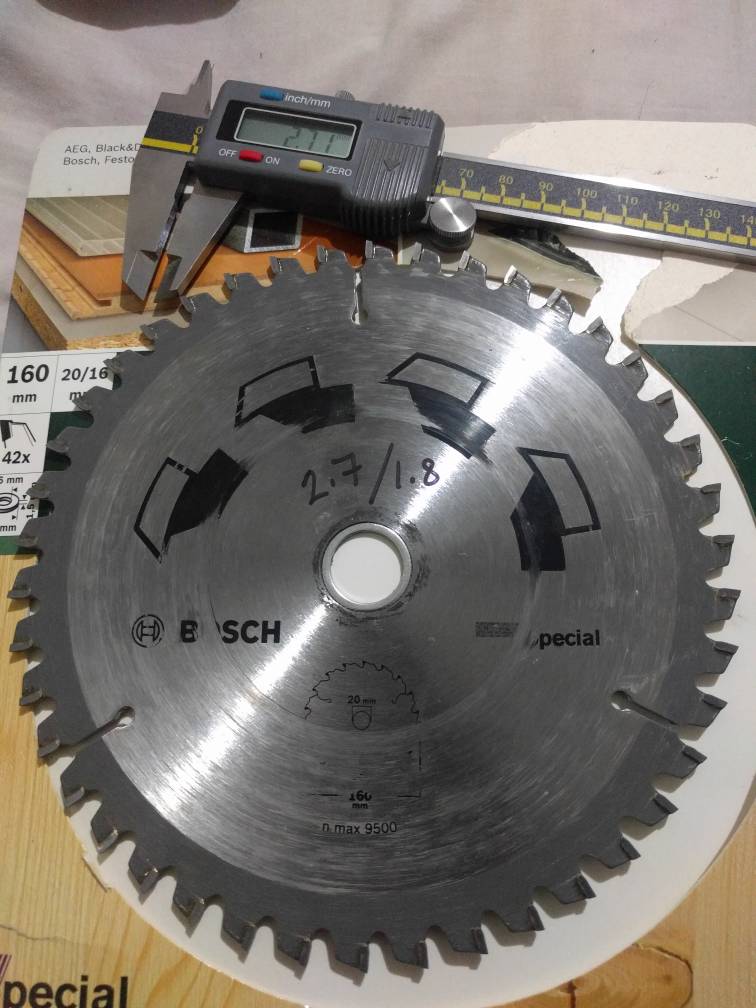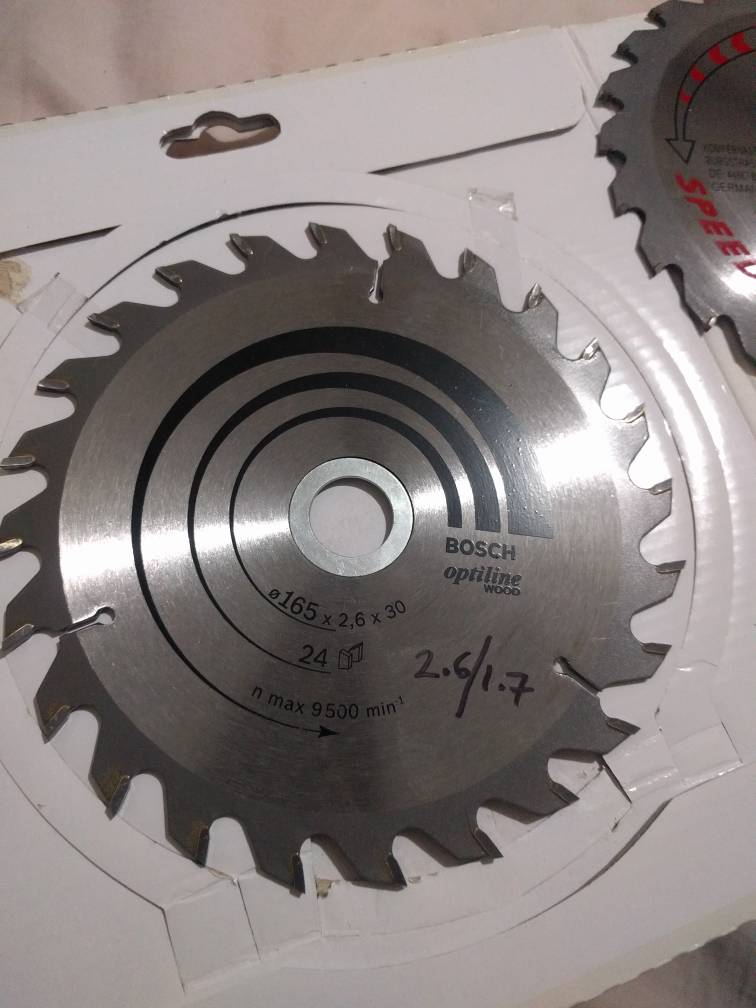Hi
I just got myself the Lidl parkside track saw, and I've been reading up on the splinter guard trimming on this forum and other places. Just want to confirm my understanding here, and ask for some advice on a specific point:
1) My understanding is that if I use the blade that came with the saw, it's a thicker kerf, and so the splinter guard will be trimmed to that kerf. Therefore, if I use a thinner blade in future, then I a) won't be able to line up the splinter guard to the cut line - and b) - I will risk more splinters since the guard will be shy of the cutting line. Am I correct so far?
2) Advice needed: Should I bother to invest in thinner kerf blades?
I don't especially have a need to use a thinner kerf blade, I was just thinking that whenever I do need to buy precision blades, e.g. 48 teeth, I just make sure they are the same thicker kerf and matches the cut line on the guard. The advice I need is - Is this a wrong decision to just stick with thicker blades?
I need to rip boards for cabinets and will need neat lines. I'll be using oak veneered MDF 19mm board soon.
Thanks!!!
I just got myself the Lidl parkside track saw, and I've been reading up on the splinter guard trimming on this forum and other places. Just want to confirm my understanding here, and ask for some advice on a specific point:
1) My understanding is that if I use the blade that came with the saw, it's a thicker kerf, and so the splinter guard will be trimmed to that kerf. Therefore, if I use a thinner blade in future, then I a) won't be able to line up the splinter guard to the cut line - and b) - I will risk more splinters since the guard will be shy of the cutting line. Am I correct so far?
2) Advice needed: Should I bother to invest in thinner kerf blades?
I don't especially have a need to use a thinner kerf blade, I was just thinking that whenever I do need to buy precision blades, e.g. 48 teeth, I just make sure they are the same thicker kerf and matches the cut line on the guard. The advice I need is - Is this a wrong decision to just stick with thicker blades?
I need to rip boards for cabinets and will need neat lines. I'll be using oak veneered MDF 19mm board soon.
Thanks!!!



































